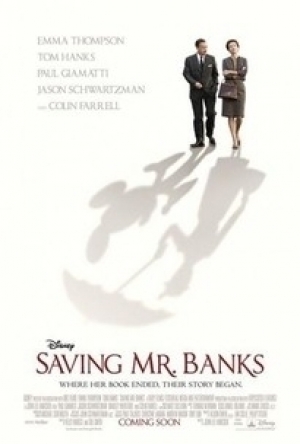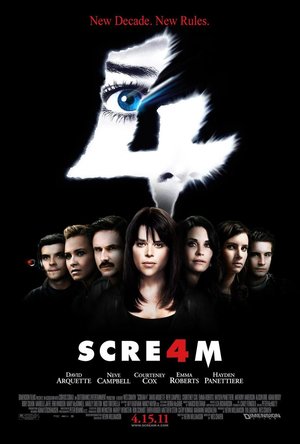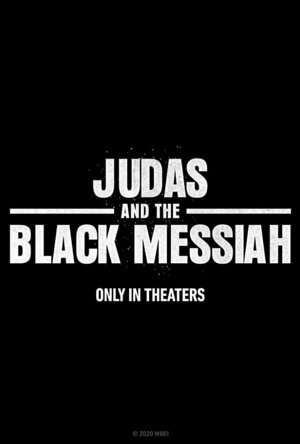Search
Search results
Gareth von Kallenbach (980 KP) rated Saving Mr. Banks (2013) in Movies
Jun 19, 2019
One of the greatest Disney classics, “Mary Poppins” has a unique history on its long journey from the page to the silver screen. In “Saving Mr. Banks”, the twenty year battle between Walt Disney and the notoriously difficult author is told in a touching and gripping tale.
Tom Hanks stars as Walt Disney who after making a promise to his daughters to bring their beloved Mary Poppins books to life embarks on a frustrating battle with author P.L. Travers (Emma Thompson), that lasts twenty years.
Faced with financial need following a lack of published materials, Travers reluctantly agrees to travel from her home in London to meet with Disney to discuss signing over the rights to her beloved character. Travers is a very abrupt individual who has no problem speaking her mind and is not one to spare feelings with her cutting and direct barbs.
Travers has little love for animation, Disneyland, or the whimsy that accompanies all things Disney and is terrified that her beloved Mary Poppins will be turned into some silly and childish film, hence her reluctance to sign over the theatrical rights.
Over the two weeks of her visit to California, Walt, and the talented Sherman Brothers (B.J. Novak and Jason Schwartzman) endure her icy behavior, harsh criticisms and intolerance for their work and efforts. Travers is horrified with everything from their casting choices to the inclusion of music and many aspects of the script and look of the characters.
Undaunted, Walt and company press on in the face of overwhelming adversity and unending opposition from Travers and slowly but surely make progress in appeasing Travers as they bring the film closer and closer to fruition.
What follows is a very moving, funny and enjoyable tale that is powered by outstanding performances by the two leads and the very strong supporting cast, especially that of Paul Giamatti who plays a driver named Ralph who has to endure the venom of Travers has he drives her around during her stay.
The film does a good job of showing what Travers endured as a child thanks to her alcoholic father (Colin Farrell), and how her experiences with his struggles helped form the woman she was to become.
While aspects of the true story have been softened somewhat in the final act from what happened in reality, the film is very honest and effective.
Many of the memorable classic songs from the movie appear in the film but are done in a very natural way as they are introduced to viewers as they are being introduced to the characters in the film.
While some aspects of the film may be a little darker than people would come to expect from a Disney movie, the film is a very enjoyable experience that is not to be missed.
http://sknr.net/2013/12/13/saving-mr-banks/
Tom Hanks stars as Walt Disney who after making a promise to his daughters to bring their beloved Mary Poppins books to life embarks on a frustrating battle with author P.L. Travers (Emma Thompson), that lasts twenty years.
Faced with financial need following a lack of published materials, Travers reluctantly agrees to travel from her home in London to meet with Disney to discuss signing over the rights to her beloved character. Travers is a very abrupt individual who has no problem speaking her mind and is not one to spare feelings with her cutting and direct barbs.
Travers has little love for animation, Disneyland, or the whimsy that accompanies all things Disney and is terrified that her beloved Mary Poppins will be turned into some silly and childish film, hence her reluctance to sign over the theatrical rights.
Over the two weeks of her visit to California, Walt, and the talented Sherman Brothers (B.J. Novak and Jason Schwartzman) endure her icy behavior, harsh criticisms and intolerance for their work and efforts. Travers is horrified with everything from their casting choices to the inclusion of music and many aspects of the script and look of the characters.
Undaunted, Walt and company press on in the face of overwhelming adversity and unending opposition from Travers and slowly but surely make progress in appeasing Travers as they bring the film closer and closer to fruition.
What follows is a very moving, funny and enjoyable tale that is powered by outstanding performances by the two leads and the very strong supporting cast, especially that of Paul Giamatti who plays a driver named Ralph who has to endure the venom of Travers has he drives her around during her stay.
The film does a good job of showing what Travers endured as a child thanks to her alcoholic father (Colin Farrell), and how her experiences with his struggles helped form the woman she was to become.
While aspects of the true story have been softened somewhat in the final act from what happened in reality, the film is very honest and effective.
Many of the memorable classic songs from the movie appear in the film but are done in a very natural way as they are introduced to viewers as they are being introduced to the characters in the film.
While some aspects of the film may be a little darker than people would come to expect from a Disney movie, the film is a very enjoyable experience that is not to be missed.
http://sknr.net/2013/12/13/saving-mr-banks/
Darren (1599 KP) rated Scream 4 (2011) in Movies
Oct 31, 2019
Characters – Sidney has made a career in books after the events in the films, she is completing her latest book tour right where it all started. With her back in town the killings start up again, Sidney must be the role model for her cousin who is going through the same situation she once did. Gale is now married to Dewey, she has given up the spotlight, but craves getting back into the field with the new killings offering her the chance. Dewey is now the sheriff who must now control the situation before it gets out of hand. We get the new potential victims or suspects here with Jill being Sidney’s cousin always tired of being in the shadow of her more famous family member, Kirby the rebellious teenager, Robbie who is filming every moment of his life for a reality YouTube network and Charlie is the leader of the film club. These characters do fit around the moulds of the original teens too.
Performances – Neve Campbell, Courteney Cox and David Arquette all return giving us good performances without needing to bring anything new to the performances. Of the new cast members nobody comes off in a shining performance which can disappoint in places as we have a wonderful set of talents in the film.
Story – The story here brings back our original characters just as a new killing spree has started in the area where it all started, with a new generation of victims and horror fans. The idea for this story comes from the idea that we have too many sequels or reboots, which does help take away the serious nature from the film, the Ghostface does seem flat for the most part because they seem to get mixed into being too intense without a reason behind the killings. Of course this is more about poking fun with the meta of everything in the horror genre which is does achieve.
Horror/Mystery – The horror in this film comes from the slasher angle, only this time we get a bloodier version of the kills showing the change in the genre. The mystery in this film comes from just who the killer is going to be this time, though we don’t get enough signs this time.
Settings – The film returns to the original town which does help with the idea of a reboot sequel piss take that we are dealing with.
Special Effects – The effects are the most disappointing side of this film because we have moments of CGI that don’t look as true as the practical moments.
Scene of the Movie – Deputy Judy being like Dewey is the funniest moments.
That Moment That Annoyed Me – The kids are not really likeable.
Final Thoughts – This is a solid look at the horror genre with the countless sequels and remakes that we are seeing, it brings back enough relevant characters back but does fail to give us enough interest new ones.
Overall: Simple fun sequel.
Performances – Neve Campbell, Courteney Cox and David Arquette all return giving us good performances without needing to bring anything new to the performances. Of the new cast members nobody comes off in a shining performance which can disappoint in places as we have a wonderful set of talents in the film.
Story – The story here brings back our original characters just as a new killing spree has started in the area where it all started, with a new generation of victims and horror fans. The idea for this story comes from the idea that we have too many sequels or reboots, which does help take away the serious nature from the film, the Ghostface does seem flat for the most part because they seem to get mixed into being too intense without a reason behind the killings. Of course this is more about poking fun with the meta of everything in the horror genre which is does achieve.
Horror/Mystery – The horror in this film comes from the slasher angle, only this time we get a bloodier version of the kills showing the change in the genre. The mystery in this film comes from just who the killer is going to be this time, though we don’t get enough signs this time.
Settings – The film returns to the original town which does help with the idea of a reboot sequel piss take that we are dealing with.
Special Effects – The effects are the most disappointing side of this film because we have moments of CGI that don’t look as true as the practical moments.
Scene of the Movie – Deputy Judy being like Dewey is the funniest moments.
That Moment That Annoyed Me – The kids are not really likeable.
Final Thoughts – This is a solid look at the horror genre with the countless sequels and remakes that we are seeing, it brings back enough relevant characters back but does fail to give us enough interest new ones.
Overall: Simple fun sequel.
Darren (1599 KP) rated Taking Lives (2004) in Movies
Jul 25, 2019
Story: Taking Lives starts as we see a young man kill another young man to steal his identity, years later a body is discovered in Canada which leads to the local French-Canadian police to call in FBI profiler Illeana (Jolie) to help with the new mystery body. Things take a turn when a man Costa (Hawke) believes he interrupted the next attempted murder before the killer is finished dealing with the body.
When the police learn this killer has been killing and stealing identities the case takes a turn and now they must figure out who the latest victim is and who he has become.
Thoughts on Taking Lives
Characters – Illeane Scott is an FBI Profiler bought in to help with the case of a killer that is stealing identities of the people he is murdering, she gets the profile correct and wants to had home after starting to become interested in one of the key witnesses. Costa is a key witness who interrupts one of the murders before the killer can complete his plan, he gives the information to track the killer. Hart is a man that soon enters Costa’s life after the incident making him the prime suspect as the killer.
Performances – Angelina Jolie is solid enough in this leading role which disappoints because we know she can be a fantastic cop figure. Ethan Hawke struggles with his role too which is only really filled with disappointment as he never convinces in his witness role. Kiefer Sutherland disappoints because we know how good he can be and want to see him more often in a film.
Story – The story is a FBI agent needing to help track down a serial killer who steals identity, yeah these are usually entertaining to watch but this just doesn’t reach the levels of mystery it needs, this might be because this is a repeat viewing and I know the ending, but there are never really any hints or suspects to work with through the film. the film lacks the true tension needed in a film that is filled with twisted crimes going on.
Crime/Mystery – The crime is interesting for a killer to be acting the way they do, the weakest part is the mystery as we just don’t meet enough potential suspects.
Settings – The film is sent in a big city which plays into the idea that someone could steal and identity and kill someone without people noticing someone going missing.
Special Effects – The effects are good because we get to see practical effects when it comes to the kills and aftermath from them.
Scene of the Movie – The lift opening.
That Moment That Annoyed Me – Not enough suspects.
Final Thoughts – This is a crime thriller that lacks the punch to make it stand out from the crowded market, we always need a large group of suspects, but this didn’t give us enough, while it did create a great killer.
Overall: Lacklustre crime thriller
When the police learn this killer has been killing and stealing identities the case takes a turn and now they must figure out who the latest victim is and who he has become.
Thoughts on Taking Lives
Characters – Illeane Scott is an FBI Profiler bought in to help with the case of a killer that is stealing identities of the people he is murdering, she gets the profile correct and wants to had home after starting to become interested in one of the key witnesses. Costa is a key witness who interrupts one of the murders before the killer can complete his plan, he gives the information to track the killer. Hart is a man that soon enters Costa’s life after the incident making him the prime suspect as the killer.
Performances – Angelina Jolie is solid enough in this leading role which disappoints because we know she can be a fantastic cop figure. Ethan Hawke struggles with his role too which is only really filled with disappointment as he never convinces in his witness role. Kiefer Sutherland disappoints because we know how good he can be and want to see him more often in a film.
Story – The story is a FBI agent needing to help track down a serial killer who steals identity, yeah these are usually entertaining to watch but this just doesn’t reach the levels of mystery it needs, this might be because this is a repeat viewing and I know the ending, but there are never really any hints or suspects to work with through the film. the film lacks the true tension needed in a film that is filled with twisted crimes going on.
Crime/Mystery – The crime is interesting for a killer to be acting the way they do, the weakest part is the mystery as we just don’t meet enough potential suspects.
Settings – The film is sent in a big city which plays into the idea that someone could steal and identity and kill someone without people noticing someone going missing.
Special Effects – The effects are good because we get to see practical effects when it comes to the kills and aftermath from them.
Scene of the Movie – The lift opening.
That Moment That Annoyed Me – Not enough suspects.
Final Thoughts – This is a crime thriller that lacks the punch to make it stand out from the crowded market, we always need a large group of suspects, but this didn’t give us enough, while it did create a great killer.
Overall: Lacklustre crime thriller
Phillip McSween (751 KP) rated Pokémon: Detective Pikachu (2019) in Movies
Jul 27, 2019
Don't Try and Make Sense of it and You'll be Just Fine
With the aid of Detective Pikachu (Ryan Reynolds), Tim Goodman (Justice Smith) is on a mission to find out what happened to his missing father.
Acting: 10
Beginning: 6
Characters: 10
You can’t have a movie centered around Pokemon and not have a bevy of characters to behold. Detective Pikachu does not disappoint pushing the envelope of creativity with the number of characters involved. Every Pokemon you can think of shows up in some form or fashion. I was just happy seeing Jiggly Puff get a small bit of shine. Outside of Pikachu himself, I thought the mime Pokemon was a riot. Seeing him and Pikachu together was probably one of my favorite scenes.
Cinematography/Visuals: 9
I was actually pretty impressed with the visuals here. The film takes place over a number of cool settings, including an MMA-style ring with a raging dragon. The colors are vibrant and help bring each Pokemon to life. I appreciate the attention to detail with this movie trying to incorporate as many characters from the game as possible. No corners were cut here as the characters seem to look true to form.
Conflict: 9
Entertainment Value: 8
I dare you to watch this movie and not at least be entertained by some of the parts. Maybe the action could have been spaced out better to prevent lagging, but there was enough there to keep my attention. Between that and Pikachu cracking me up every few minutes, I was surprised by how little of an effort it was to watch this movie.
Memorability: 7
There are a few scenes that are done extremely well while others could have been left out. Probably what stands out the most to me in terms of memorability is here is a movie that was most likely supposed to fail. Yet, director Rob Letterman managed to prove over and over again that the project had legs. It’s not a movie that over saturates you with great moments, but there is enough of a framework to keep you happy.
Pace: 8
Plot: 1
If they had gotten this part right, I’m looking at the movie in a whole different light. The story was all over the place. It was way too jumbled, a hot mess. There is an objective, then there’s a side objective with all these cheats along the way. I finally just said, “Screw it, I’ll enjoy it for what it is. Not going to try and make sense of it.”
Resolution: 10
The ending almost made up for the shoddy plot. It’s cute and touching, very fitting considering the craziness Pikachu and Tim went through for the duration of the story. Happy with how things shook out.
Overall: 78
Sometimes it only takes one thing to keep a movie from greatness. In this case Pokemon: Detective Pikachu couldn’t stop tripping over itself with its awkward storyline. I still recommend it for one good watch.
Acting: 10
Beginning: 6
Characters: 10
You can’t have a movie centered around Pokemon and not have a bevy of characters to behold. Detective Pikachu does not disappoint pushing the envelope of creativity with the number of characters involved. Every Pokemon you can think of shows up in some form or fashion. I was just happy seeing Jiggly Puff get a small bit of shine. Outside of Pikachu himself, I thought the mime Pokemon was a riot. Seeing him and Pikachu together was probably one of my favorite scenes.
Cinematography/Visuals: 9
I was actually pretty impressed with the visuals here. The film takes place over a number of cool settings, including an MMA-style ring with a raging dragon. The colors are vibrant and help bring each Pokemon to life. I appreciate the attention to detail with this movie trying to incorporate as many characters from the game as possible. No corners were cut here as the characters seem to look true to form.
Conflict: 9
Entertainment Value: 8
I dare you to watch this movie and not at least be entertained by some of the parts. Maybe the action could have been spaced out better to prevent lagging, but there was enough there to keep my attention. Between that and Pikachu cracking me up every few minutes, I was surprised by how little of an effort it was to watch this movie.
Memorability: 7
There are a few scenes that are done extremely well while others could have been left out. Probably what stands out the most to me in terms of memorability is here is a movie that was most likely supposed to fail. Yet, director Rob Letterman managed to prove over and over again that the project had legs. It’s not a movie that over saturates you with great moments, but there is enough of a framework to keep you happy.
Pace: 8
Plot: 1
If they had gotten this part right, I’m looking at the movie in a whole different light. The story was all over the place. It was way too jumbled, a hot mess. There is an objective, then there’s a side objective with all these cheats along the way. I finally just said, “Screw it, I’ll enjoy it for what it is. Not going to try and make sense of it.”
Resolution: 10
The ending almost made up for the shoddy plot. It’s cute and touching, very fitting considering the craziness Pikachu and Tim went through for the duration of the story. Happy with how things shook out.
Overall: 78
Sometimes it only takes one thing to keep a movie from greatness. In this case Pokemon: Detective Pikachu couldn’t stop tripping over itself with its awkward storyline. I still recommend it for one good watch.
Gareth von Kallenbach (980 KP) rated I, Tonya (2017) in Movies
Jul 8, 2019
Most people when they hear the name Tonya Harding immediately have images of Nancy Kerrigan holding her knee and crying out “Why?” over and over again come to their minds. They may even think of Harding herself crying to a panel of judges about the state of the laces on her skates during Olympic competition. Her name and image became a point of ridicule and shame. She became the butt of jokes throughout the 90s and a never-ending punchline. People were not sympathetic to her and were not willing to hear her story. She was condemned to being the monster that we convinced ourselves that she was. The film I, Tonya sheds light onto who this woman was in demonstrating the complexities of her upbringing, years of abuse at the hands of her mother and later her husband. Margot Robbie (Suicide Squad, Wolf of Wall Street) stars as Tonya Harding, the disgraced Olympic figure skater.
I Tonya, takes audiences deep into the world that Tonya Harding experiences. We see the heartache, we bear witness to the brutal violence and abuse she suffers. Audiences find themselves rooting for Tonya to break out and become a success. The film, based on interviews, court testimony, and sports and news footage allows us all to have a greater picture of exactly who Tonya was. It points out in a mixture of humor, terror, and realism what the public got wrong about her and how we all became her worst abusers. The public wanted her to not only fail, but to fail miserably as most had fallen in love with her competitor and the victim of an attack committed in Tonya’s name. I Tonya, through brutal honesty shows us how someone who is already flawed due to their appearance, presentation, or lack of polish can quickly become villainized because they do not fit our description of innocent or are seen as someone we want representing us. The true reality of I, Tonya is that the film is a reflection in the mirror. It is one of the most honest representations of what the human, and more specifically, the American experience is. You have successes and failures, but despite this, we are recognized for the worst actions that are linked to our names and images.
I, Tonya takes the best elements of Mommy Dearest, Blades of Glory, Black Swan, and Sleeping With The Enemy in order to create a sports biopic that audiences will not realize they needed until they find themselves walking out of the theater. Margot Robbie, Allison Janney (Mom, The Help, Juno), and Sebastian Stan (Captain America: Civil War) will have audiences angered, elated, and heartbroken as they take audiences on a full tour of their emotions. I, Tonya is an instant classic that will capture audiences with its storytelling and demonstrate that Tonya Harding’s life is much more than a one-liner.
I Tonya, takes audiences deep into the world that Tonya Harding experiences. We see the heartache, we bear witness to the brutal violence and abuse she suffers. Audiences find themselves rooting for Tonya to break out and become a success. The film, based on interviews, court testimony, and sports and news footage allows us all to have a greater picture of exactly who Tonya was. It points out in a mixture of humor, terror, and realism what the public got wrong about her and how we all became her worst abusers. The public wanted her to not only fail, but to fail miserably as most had fallen in love with her competitor and the victim of an attack committed in Tonya’s name. I Tonya, through brutal honesty shows us how someone who is already flawed due to their appearance, presentation, or lack of polish can quickly become villainized because they do not fit our description of innocent or are seen as someone we want representing us. The true reality of I, Tonya is that the film is a reflection in the mirror. It is one of the most honest representations of what the human, and more specifically, the American experience is. You have successes and failures, but despite this, we are recognized for the worst actions that are linked to our names and images.
I, Tonya takes the best elements of Mommy Dearest, Blades of Glory, Black Swan, and Sleeping With The Enemy in order to create a sports biopic that audiences will not realize they needed until they find themselves walking out of the theater. Margot Robbie, Allison Janney (Mom, The Help, Juno), and Sebastian Stan (Captain America: Civil War) will have audiences angered, elated, and heartbroken as they take audiences on a full tour of their emotions. I, Tonya is an instant classic that will capture audiences with its storytelling and demonstrate that Tonya Harding’s life is much more than a one-liner.
BankofMarquis (1832 KP) rated Pain and Glory (2019) in Movies
Feb 3, 2020
Well acted by Banderas and Cruz
One of the reasons that I go on the trek this time every year to catch all the Oscar nominees in the all of the "Major" categories is that it forces me to catch films and have movie going experiences that I most likely would have elected to skip. This is especially true with Foreign Language films, like Spanish Director Pedro Almodovar's semi-biographical musing, PAIN AND GLORY.
Antonio Banderas, rightfully, has earned his (surpisingly) first Oscar Nomination for portraying a somewhat fictionalized version of the Spanish auteur - a once prolific film Director at the tail end of his career coming to terms with who he is, the physical pain he is currently feeling as his body ages and the reverent feelings and fond memories he has for his mother.
It is a strong, subtle and nuanced performance by Banderas - one that is in stark contrast to the bravura and panache that he has shown previously in such films as ZORRO, ONCE UPON A TIME IN MEXICO and as the voice of Puss 'N Boots in the SHREK films. Banderas' acting his been getting better with age and while I do not think he'll win the Oscar, I do think that this is not going to be the only Oscar nomination he will receive in his lifetime.
I was happy to see Banderas work in his native Spanish language - the same goes for Penelope Cruz who plays Banderas' character mother in flashbacks. I recently saw Cruz working in Spanish in 2018's EVERYBODY KNOWS and was just as transfixed by her performance in this film - worthy of a nomination. She is very good in English Language films, but she elevates to a different level when she works in Spanish. I would have loved to see a whole film about her character - and not just get a few scenes in flashback form.
Watching these 2 performances was well worth the time of watching this film, and that is good for I did not connect with the themes, struggles and plot set forth by Almodovar.
PAIN AND GLORY is Almodovar's semi-biographical meditation on life - and as such is a little to "navel gazing" for my tastes. When I watch these types of films either I get sucked into the narrative and characters (like I did with Alfonso Cuaron's ROMA last year) or...I do not.
And...unfortunately for PAIN AND GLORY...I did not. It is a good picture with 2 really good performances but one I was kept at a distance from and one that I never really connected with.
Come for the meditation, stay for the performances. And...PLEASE...if you watch this, DO NOT watch the dubbed version. Listen to the performances of Banderas and Cruz in their native Spanish and read the subtitles.
Letter Grade: B
7 stars (out of 10) and you can take that to the Bank(ofMarquis)
Antonio Banderas, rightfully, has earned his (surpisingly) first Oscar Nomination for portraying a somewhat fictionalized version of the Spanish auteur - a once prolific film Director at the tail end of his career coming to terms with who he is, the physical pain he is currently feeling as his body ages and the reverent feelings and fond memories he has for his mother.
It is a strong, subtle and nuanced performance by Banderas - one that is in stark contrast to the bravura and panache that he has shown previously in such films as ZORRO, ONCE UPON A TIME IN MEXICO and as the voice of Puss 'N Boots in the SHREK films. Banderas' acting his been getting better with age and while I do not think he'll win the Oscar, I do think that this is not going to be the only Oscar nomination he will receive in his lifetime.
I was happy to see Banderas work in his native Spanish language - the same goes for Penelope Cruz who plays Banderas' character mother in flashbacks. I recently saw Cruz working in Spanish in 2018's EVERYBODY KNOWS and was just as transfixed by her performance in this film - worthy of a nomination. She is very good in English Language films, but she elevates to a different level when she works in Spanish. I would have loved to see a whole film about her character - and not just get a few scenes in flashback form.
Watching these 2 performances was well worth the time of watching this film, and that is good for I did not connect with the themes, struggles and plot set forth by Almodovar.
PAIN AND GLORY is Almodovar's semi-biographical meditation on life - and as such is a little to "navel gazing" for my tastes. When I watch these types of films either I get sucked into the narrative and characters (like I did with Alfonso Cuaron's ROMA last year) or...I do not.
And...unfortunately for PAIN AND GLORY...I did not. It is a good picture with 2 really good performances but one I was kept at a distance from and one that I never really connected with.
Come for the meditation, stay for the performances. And...PLEASE...if you watch this, DO NOT watch the dubbed version. Listen to the performances of Banderas and Cruz in their native Spanish and read the subtitles.
Letter Grade: B
7 stars (out of 10) and you can take that to the Bank(ofMarquis)

A Charlie Brown Christmas + iMessage Sticker Pack!
Book, Entertainment and Stickers
App
* iPhone AND iPad APP OF THE WEEK * * MACWORLD APPS ESSENTIAL COLLECTIONS * * ABOUT.COM #1 CHRISTMAS...

Word Chums
Games and Entertainment
App
More fun than Words With Friends and more addicting than Scrabble, WORD CHUMS: the highest rated...

Gladiatori Moderni
Book
Bodies, sweat, the direct gaze; strength, courage, doubt; the visual and emotional alphabet of Piero...
BankofMarquis (1832 KP) rated Judas and the Black Messiah (2021) in Movies
Feb 23, 2021
Kaluuya in an Oscar worthy performance
Ever since Daniel Kaluuya burst onto the scene in 2017’s GET OUT, he has been an actor to watch - one who’s brilliance bursts off the screen in whatever project he is in.
This brilliance shines brightly in his latest effort JUDAS AND THE BLACK MESSIAH that teams him up with his GET OUT co-star LaKeith Stanfield in the true story of 1960’s Chicago Black Panther leader Fred Hampton (Kaluuya) and his friend/Security Chief, Bill O’Neal (Stanfield) who just happens to be an FBI informant.
Directed and Written by Shaka King, JUDAS AND THE BLACK MESSIAH tells an important, under-told story of the African-American struggle in the wild, changing times of America in the 1960’s.
Kaluuya’s performance as Hampton is up to the challenge of a story this big and bold - his Fred Hampton is charismatic and involving, drawing all into his world. He’s a bigger-than-life icon that demands attention whenever Kaluuya/Hampton is on the stage. I expect an Oscar nomination (at least) for this performance.
The problem with this film is that Kaluuya’s Hampton is such a strong and commanding presence that the rest of the story and characters pale in comparison to him.
Such is the case with Stanfield’s portrayal of O’Neal. I really like LaKeith Stanfield as a performer and was really looking forward to seeing him and Kaluuya go toe-to-toe, but his character is swallowed up in the largess of the Hampton character and, so, I never connected or sympathized with him. I don’t blame this on the actor, I blame this on the script and the direction of King, making the O’Neal character weak - especially when he is up against Hampton.
The character/actor that WAS able to hold their own with Kaluuya/Hampton is Dominique Fishback as Hampton’s lover (and mother of his child), Deborah Johnson. The scenes of Hampton and Johnson together were sharp and interesting - perhaps because Hampton was toned down, but also because Fishback’s portrayal of Johnson was strong enough to stand up to Kaluuya’s portrayal of Hampton.
In addition, Kaluuya’s performance is so strong in this film that it is noticeable when it is absent, so when his character is sent to prison (and disappears) for the middle 1/3 of this film, the movie drags considerably.
Finally, the film hits a plateau at about the 4/5 mark and doesn’t really build to a crescendo at the end - an ending that should be powerful, but just sorts of lies there.
All-in-all, JUDAS AND THE BLACK MESSIAH is worth seeing for the powerful performance by Daniel Kaluuya that more than makes up for the shortcomings of the rest of the film.
Letter Grade: B
7 stars (out of 10) - and you can take that to the Bank(ofMarquis)
This brilliance shines brightly in his latest effort JUDAS AND THE BLACK MESSIAH that teams him up with his GET OUT co-star LaKeith Stanfield in the true story of 1960’s Chicago Black Panther leader Fred Hampton (Kaluuya) and his friend/Security Chief, Bill O’Neal (Stanfield) who just happens to be an FBI informant.
Directed and Written by Shaka King, JUDAS AND THE BLACK MESSIAH tells an important, under-told story of the African-American struggle in the wild, changing times of America in the 1960’s.
Kaluuya’s performance as Hampton is up to the challenge of a story this big and bold - his Fred Hampton is charismatic and involving, drawing all into his world. He’s a bigger-than-life icon that demands attention whenever Kaluuya/Hampton is on the stage. I expect an Oscar nomination (at least) for this performance.
The problem with this film is that Kaluuya’s Hampton is such a strong and commanding presence that the rest of the story and characters pale in comparison to him.
Such is the case with Stanfield’s portrayal of O’Neal. I really like LaKeith Stanfield as a performer and was really looking forward to seeing him and Kaluuya go toe-to-toe, but his character is swallowed up in the largess of the Hampton character and, so, I never connected or sympathized with him. I don’t blame this on the actor, I blame this on the script and the direction of King, making the O’Neal character weak - especially when he is up against Hampton.
The character/actor that WAS able to hold their own with Kaluuya/Hampton is Dominique Fishback as Hampton’s lover (and mother of his child), Deborah Johnson. The scenes of Hampton and Johnson together were sharp and interesting - perhaps because Hampton was toned down, but also because Fishback’s portrayal of Johnson was strong enough to stand up to Kaluuya’s portrayal of Hampton.
In addition, Kaluuya’s performance is so strong in this film that it is noticeable when it is absent, so when his character is sent to prison (and disappears) for the middle 1/3 of this film, the movie drags considerably.
Finally, the film hits a plateau at about the 4/5 mark and doesn’t really build to a crescendo at the end - an ending that should be powerful, but just sorts of lies there.
All-in-all, JUDAS AND THE BLACK MESSIAH is worth seeing for the powerful performance by Daniel Kaluuya that more than makes up for the shortcomings of the rest of the film.
Letter Grade: B
7 stars (out of 10) - and you can take that to the Bank(ofMarquis)






